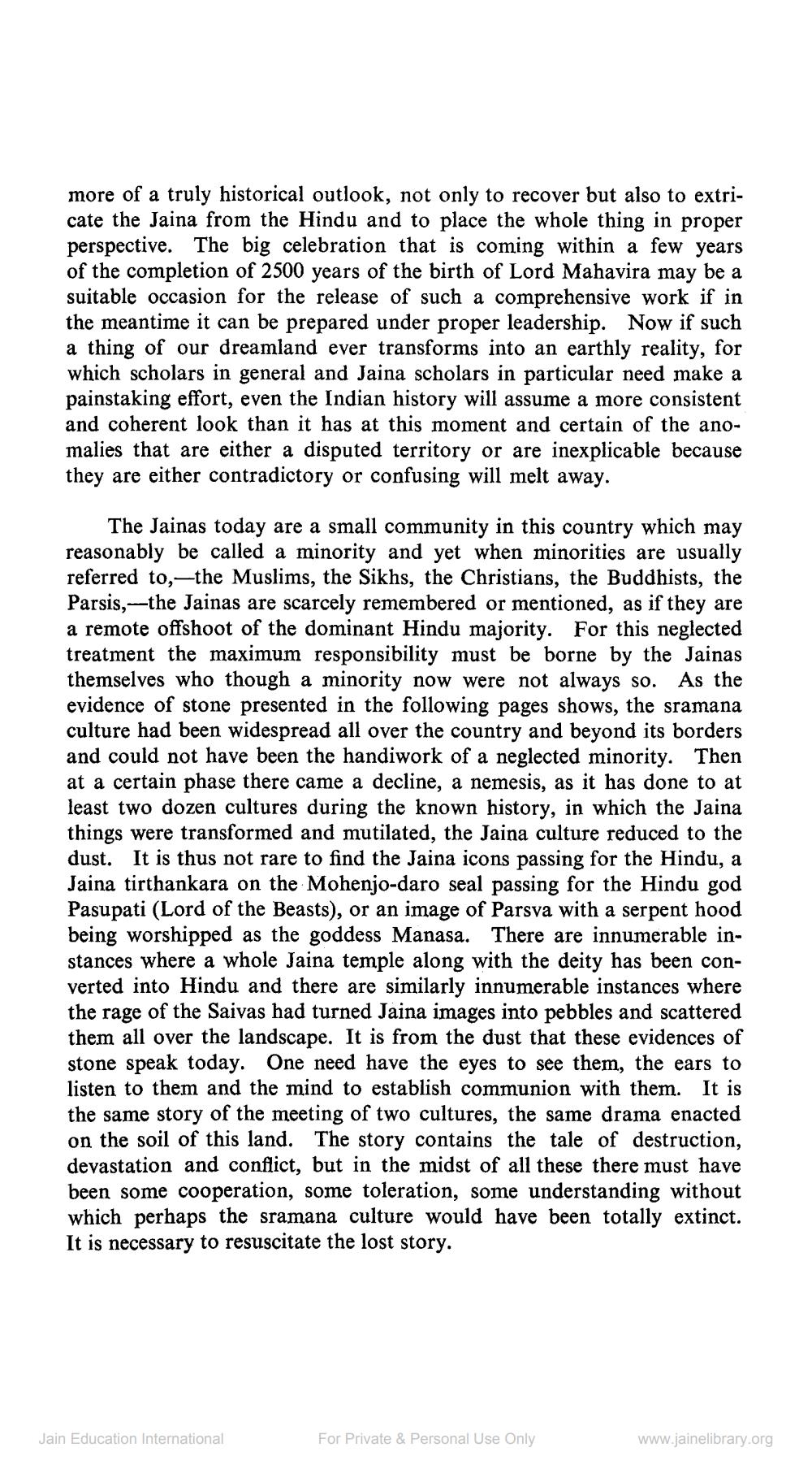Book Title: Jain Journal 1969 04 Author(s): Jain Bhawan Publication Publisher: Jain Bhawan Publication View full book textPage 4
________________ more of a truly historical outlook, not only to recover but also to extricate the Jaina from the Hindu and to place the whole thing in proper perspective. The big celebration that is coming within a few years of the completion of 2500 years of the birth of Lord Mahavira may be a suitable occasion for the release of such a comprehensive work if in the meantime it can be prepared under proper leadership. Now if such a thing of our dreamland ever transforms into an earthly reality, for which scholars in general and Jaina scholars in particular need make a painstaking effort, even the Indian history will assume a more consistent and coherent look than it has at this moment and certain of the anomalies that are either a disputed territory or are inexplicable because they are either contradictory or confusing will melt away. The Jainas today are a small community in this country which may reasonably be called a minority and yet when minorities are usually referred to,—the Muslims, the Sikhs, the Christians, the Buddhists, the Parsis,--the Jainas are scarcely remembered or mentioned, as if they are a remote offshoot of the dominant Hindu majority. For this neglected treatment the maximum responsibility must be borne by the Jainas themselves who though a minority now were not always so. As the evidence of stone presented in the following pages shows, the sramana culture had been widespread all over the country and beyond its borders and could not have been the handiwork of a neglected minority. Then at a certain phase there came a decline, a nemesis, as it has done to at least two dozen cultures during the known history, in which the Jaina things were transformed and mutilated, the Jaina culture reduced to the dust. It is thus not rare to find the Jaina icons passing for the Hindu, a Jaina tirthankara on the Mohenjo-daro seal passing for the Hindu god Pasupati (Lord of the Beasts), or an image of Parsva with a serpent hood being worshipped as the goddess Manasa. There are innumerable instances where a whole Jaina temple along with the deity has been converted into Hindu and there are similarly innumerable instances where the rage of the Saivas had turned Jaina images into pebbles and scattered them all over the landscape. It is from the dust that these evidences of stone speak today. One need have the eyes to see them, the ears to listen to them and the mind to establish communion with them. It is the same story of the meeting of two cultures, the same drama enacted on the soil of this land. The story contains the tale of destruction, devastation and conflict, but in the midst of all these there must have been some cooperation, some toleration, some understanding without which perhaps the sramana culture would have been totally extinct. It is necessary to resuscitate the lost story. Jain Education International For Private & Personal Use Only www.jainelibrary.orgPage Navigation
1 2 3 4 5 6 7 8 9 10 11 12 13 14 15 16 17 18 19 20 21 22 23 24 25 26 27 28 29 30 31 32 33 34 35 36 37 38 39 40 41 42 ... 123
